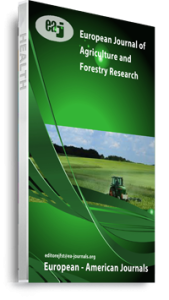Nigeria is endowed with abundant agricultural land resources of varying biophysiographic features. Providing adequate varied quality foods and raw materials to sustain Nigeria’s growing population and agro-industries were respectively very critical. Agricultural land resources performance indices were crop yields per hectare among others and several factors spurred land quality degradation that subsequently unpeded it’s productivity leading to the nation’s food supply deficits for over five decades. The enigma that prompted this research effort was that the extent by which Nigeria’s aggregate agricultural land resources quality degraded were not known. The overall objective of this study was to capture the real changes in the nation’s agricultural land resources quality in terms of soil fertility and productivity. The nation’s aggregate soil fertility was scaled using crop numeraire to capture the agricultural land resources quality index while F-Statistics was used to test the hypothesis. The observed productivity gains corresponded to land quality index suggesting that arable lands were highly responsive to both intended and unintended on-farm cultural practices and component technology inputs. The highest (5.0363) and least (2.8140) observed agricultural land quality occurred in the years 1974 and 2010 respectively. Greater variability (14.6%) in land quality occurred in the period 1980-1989 while the land quality dispersion around the mean was higher in the period 1970-1979. The nation’s land resources quality showed a downward slowdown demand curve and estimates of the mean absolute percentage error were 7.4% and 0.33% respectively for the original forecast error and Chi-Square forecast error. Comparatively, the criterion functions of the two forecasts generated a relative land quality index prediction of 94%. This implied that the original forecast error had a mean square error of 94% that of the Chi-Square. Hence the Chi-Square results were adjudged to have better performance. The observed F-value, 9.4004ns was not statistically significant at 5% level. Hence the acceptance of the null hypothesis that there were no significant difference in land quality across Nigeria for the five decade years. The highest positive amplitude of the land quality movement and land quality were observed in 1973 and 1974 respectively while the two peak periods of highest negative amplitudes of land quality movements occurred at the close of 1974 and 1983 respectively. Comparatively, changes in land quality index (17.8%) were more consistent than agricultural land degradation rate of change (160.4%).
Keywords: Agricultural Land Quality, Land Degradation and Productivity., Numeraire Crops

